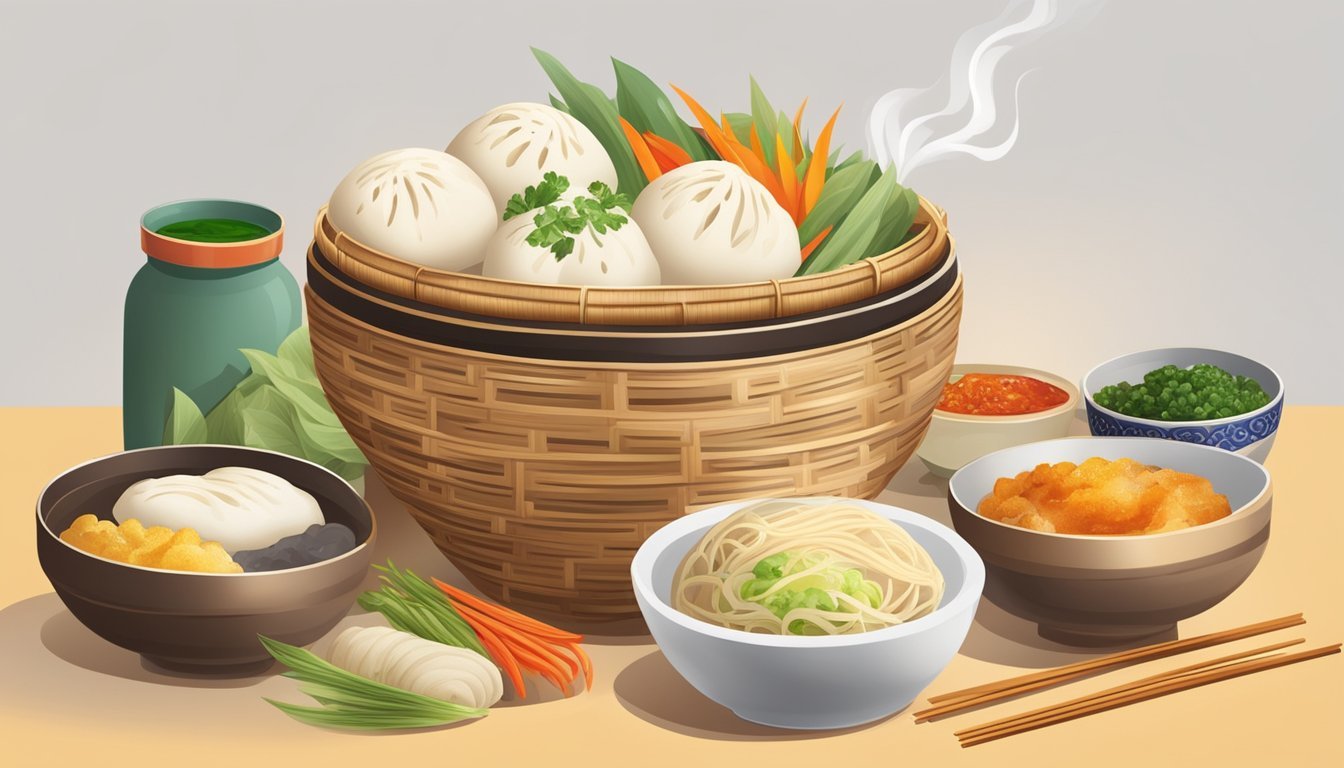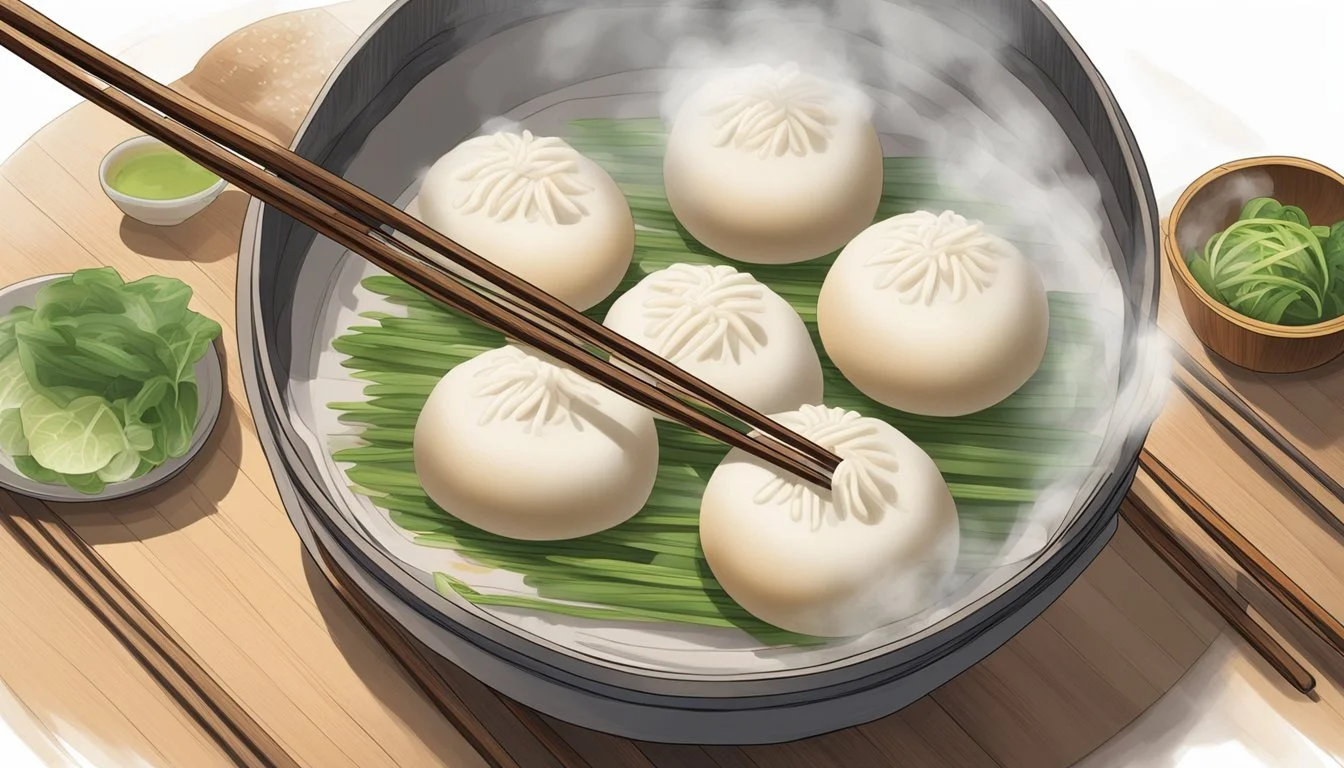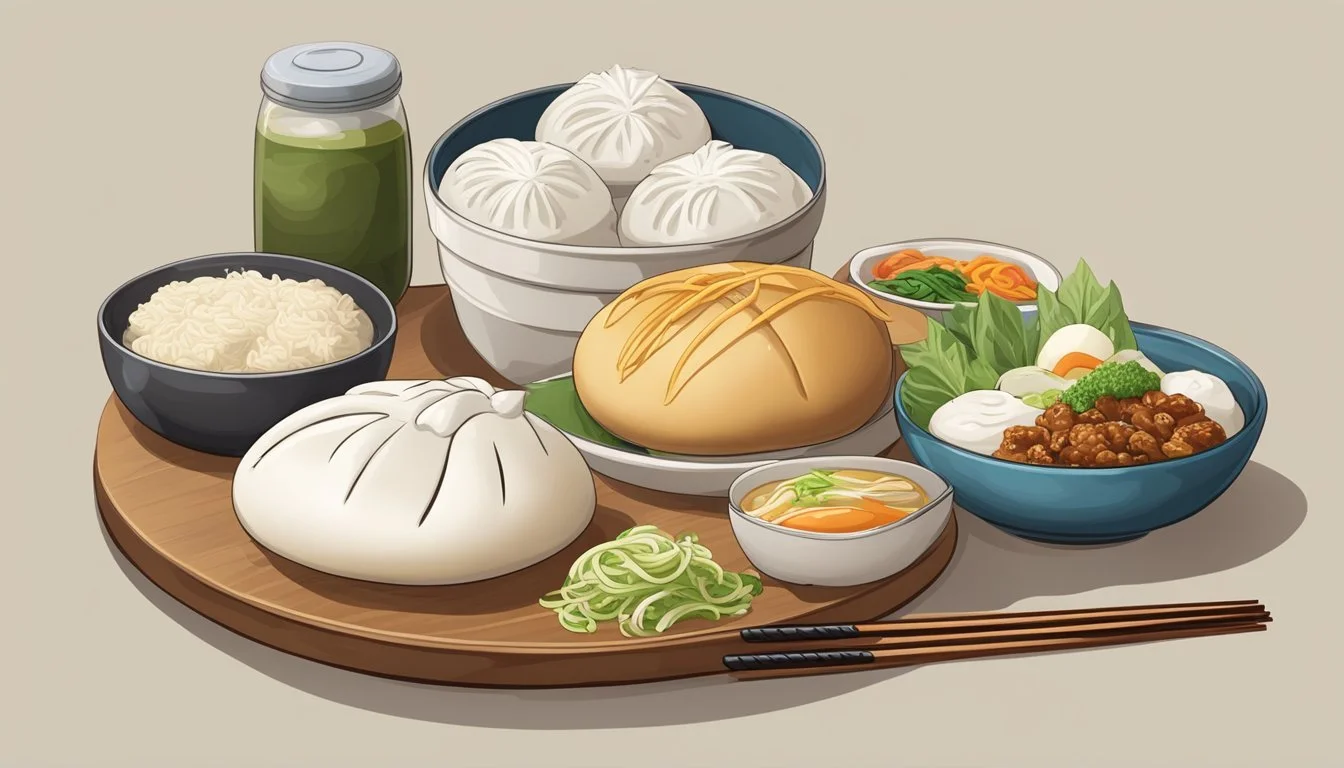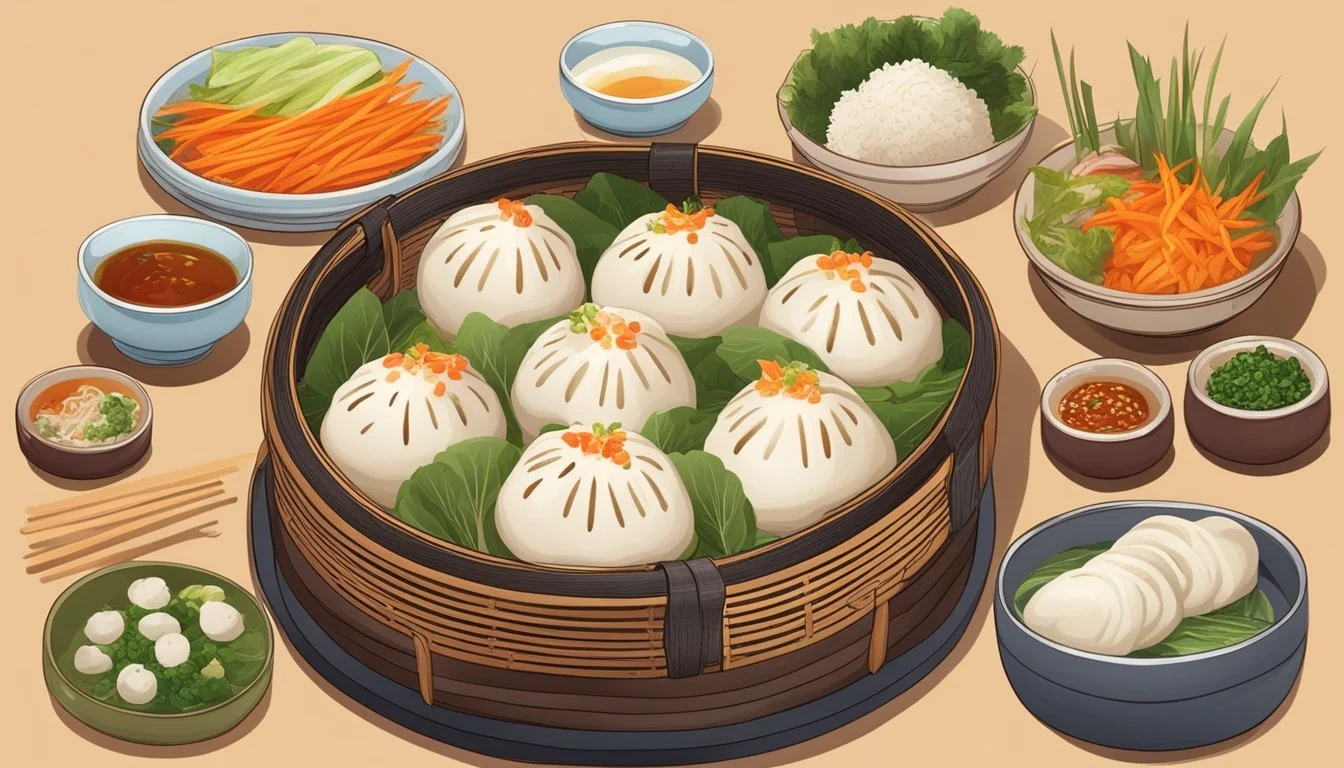How do you eat bao buns?
Mastering the Art of Enjoying This Asian Delicacy
Bao buns, the pillowy and soft steamed buns that are a staple in Chinese cuisine, have become a global sensation appreciated for their versatility. They can be served as a tantalizing appetizer or a central element of dinner and have gained popularity as street food, traveling far beyond their traditional Asian roots. These wheat-based buns are typically white and are prepared by wrapping the dough around a variety of fillings and then steamed until fluffy. The resulting texture is a perfect canvas for both savory and sweet ingredients, offering an array of flavor profiles for every palate.
Typically, there are two main styles of bao buns: open and closed. The open bao, reminiscent of a taco, allows diners to see and savor the filling with each bite, while the closed bao conceals the mixture within, providing a surprise of flavors and textures when bitten into. Whether enjoying these buns at home or from a street vendor, they should always be consumed freshly steamed to experience the signature softness and warmth that make them so delightful.
Eating bao buns is a straightforward affair that involves preparation and customization according to personal preferences. Before eating, one may gently open the bao if it's of the open variety, allowing for additional fillings or sauces to be added. The correct way to eat a bao bun ultimately depends on the style and the occasion—grasped with the hands for a casual setting or with chopsticks or utensils for a more formal meal, enhancing the communal and interactive nature of enjoying bao buns.
Origins of Bao Buns
Bao buns have a rich history that spans over a millennium, with origins in China and a cultural journey that has introduced them to various regions, eventually finding popularity in Western culture.
Historical Background
Bao buns, known traditionally as baozi, trace their origins to China during the Three Kingdoms period around 220-280 AD. It is believed that these steamed buns were conceptualized by military strategist Zhuge Liang. Over the centuries, they evolved from simple wheat flour dough into various forms with diverse fillings.
Regional Varieties
In China, there is a wide range of bao buns, including the simple mantou and the stuffed chu bao. Taiwan is famous for its gua bao, which typically contains stewed meat tucked into a folded, flat steamed bun. Throughout Asia, many countries have developed their own versions, with fillings and shapes influenced by local cuisines.
Bao Buns in Western Culture
The popularity of bao buns in Western countries gained momentum with the rising trend of Asian fusion cuisines. Renowned chefs like David Chang have introduced inventive takes on the traditional bao in the UK and other Western countries, making them a fashionable and highly sought-after food item in numerous contemporary Asian dining establishments.
Ingredients and Preparations
In the preparation of bao buns, precise ingredients and steps are crucial to achieving the perfect texture and flavor. The process involves making a smooth, elastic dough, preparing a flavorful filling, and properly steaming the buns to soft perfection.
Essential Ingredients
The base ingredients for bao bun dough typically include:
Flour: A high-quality, white wheat flour creates the bun's structure.
Yeast: Active dry yeast helps the dough rise and contributes to the fluffiness.
Water: Lukewarm water activates the yeast.
Milk: It enriches the dough, offering a tender crumb and richer flavor.
Sugar: It feeds the yeast and adds a slight sweetness to the dough.
For fillings, common ingredients range from meats to sweet options:
Proteins: Options include pork, chicken, or beef, often marinated and cooked.
Vegetables: Fresh or sautéed vegetables add texture and nutrition.
Sweet Fillings: These may consist of red bean paste or sweetened fruit mixtures.
Making the Dough
To make the dough:
Activate Yeast: Mix sugar into lukewarm water between 105-115°F and sprinkle yeast on top. Allow it to become frothy, indicating activity.
Combine Ingredients: Gradually incorporate the yeast mixture into the flour, stirring with a circular motion until a sticky dough forms.
Kneading is essential for gluten development which can be facilitated by using a rolling pin or stand mixer until the dough is smooth and elastic.
Preparing the Filling
Preparing the filling involves:
Marinating the chosen protein, such as pork, chicken, or beef, with sauces and seasonings.
Cooking the filling thoroughly before stuffing it into the bao buns.
Vegetarian options might include a mixture of sautéed vegetables.
Sweet variants are typically prepared with a thick, sweet paste.
Steaming Process
Once the dough is divided and filled, rolling each portion into a bun shape is next.
The buns are placed in a steamer, with a preference for a traditional bamboo steamer for its ability to absorb excess moisture, enhancing the texture of the bun.
Steam the buns for the appropriate time, usually between 10-15 minutes, until they are puffed and cooked through.
Proper steaming is vital as it is the final step that sets the bao buns apart, making them light, fluffy, and ready to enjoy.
Types of Bao Buns
Bao buns, also known as baozi, are a versatile Chinese cuisine offering a variety of fillings and cooking methods to suit different preferences, ranging from sweet to savory flavors.
Different Fillings
Savory Fillings:
Pork Belly (What wine goes well with pork belly?) : A classic choice where succulent pork belly is seasoned and enclosed within the dough.
Char Siu Bao: These are filled with barbecued pork, known for its sweet and sticky flavor.
Vegetarian Options: Include fillings like mushrooms, tofu, and mixed vegetables, catering to diverse palates.
Sweet Fillings:
Often consist of red bean paste, lotus seed paste, or sweet custard, appealing to those with a penchant for desserts.
Cooking Methods
Steamed Buns: The traditional approach resulting in a soft, pillowy texture. Both savory steamed pork bun and sweeter varieties like lotus seed buns are popular.
Baked Buns: Provide a golden-brown exterior and a slightly firmer texture. Varieties like the char siu bao are often found in this form.
Pan-Fried: Gives the bao a crispy bottom, adding a textural contrast to the soft top part, typically used in savory, protein-packed buns.
Mantou, though similar, refers specifically to plain steamed buns without any filling. These are often served as a side dish to complement main dishes and are appreciated for their gentle, doughy taste. Whether it's the stuffed baozi with delectable fillings or the simple mantou, bao buns offer a whole spectrum of flavors and textures to explore.
Serving and Eating Bao Buns
When serving and eating bao buns, one can enrich the experience with a variety of accompaniments and sauces. It is also beneficial to be aware of the proper etiquette to fully enjoy the meal.
Accompaniments
Bao buns can be served with a range of sides to enhance their flavor. Common accompaniments include:
Vegetables: Such as quick pickled cucumber, pickled vegetables, (What wine goes well with pickled vegetables?) and fresh herbs like cilantro.
Proteins: Typically, filling options include pork belly, crispy shrimp, or tofu for a vegetarian option.
Garnishes: Sprinkling toasted sesame seeds or finely chopped scallions can add a pop of flavor and texture.
Sauces and Condiments
To complement bao buns, a variety of sauces and condiments may be offered. These include:
Soy Sauce: A staple in many Asian cuisines, adding a salty and umami flavor.
Vinegar: For a touch of acidity, which can brighten the flavors.
Sriracha and Chili Oil: To incorporate heat for those who enjoy a spicy kick.
Hoisin Sauce and Tamari: For sweetness and depth; tamari being a gluten-free alternative to soy sauce.
Dipping Sauce: A mixture of the above can be used as a dipping sauce or drizzled inside the bun.
Proper Eating Etiquette
When eating bao buns, diners should keep a few points of etiquette in mind:
Bao buns are traditionally eaten by hand, ensuring a full experience of their texture.
It is polite to eat carefully to avoid spilling the filling, using a napkin to catch any drips.
Small bites are recommended, as bao buns can be quite filling.
Customizing Your Bao Buns
Bao buns offer a versatile canvas for culinary creativity, allowing enthusiasts to explore a variety of flavors and textures through custom fillings, toppings, and cooking methods.
Creating Your Own Fillings
In crafting homemade bao bun fillings, one must consider the balance of flavors. For a savory taste, char siu (Chinese barbecued pork) is a popular choice. It involves marinating the pork in a mix of soy sauce, hoisin sauce, and Chinese five-spice before roasting or grilling. Minced pork can also be seasoned with ginger, garlic, soy sauce, and oyster sauce for a simpler yet flavorful option.
Sweet Variant: For those with a sweet tooth, a filling of sugared red bean paste or custard can add a delightful contrast to the fluffy bun.
Vegan Option: A mixture of tofu, shiitake mushrooms, soy sauce, and sesame oil creates a hearty plant-based filling.
Toppings and Garnishes
Once the basic filling is chosen, add toppings and garnishes to enhance both visual appeal and texture.
Greens: Finely chopped spring onions or cilantro add a fresh, herby layer.
Crunch: Sliced cucumber or pickled vegetables provide a crunch, cutting through the bun's softness.
Be sure to consider garnishes that will complement the filling's primary flavor, such as hoisin sauce for a sweeter profile or Sriracha for a spicy kick.
Alternative Cooking Options
While steaming is the traditional method, resulting in soft and pillowy bao, there are alternative cooking options to explore. For instance, after steaming, one can pan-fry the bottoms of the buns to add a crispy texture. Another method is to bake the buns with a cornstarch wash to create a shiny, slightly sticky exterior.
Sticky Pork Bao Buns: For a twist on the classic, after steaming, glaze the pork-filled buns with a sweet soy sauce reduction and briefly bake to achieve a sticky, caramelized finish.
Pairings and Side Dishes
When enjoying bao buns, the choice of side dishes can enhance the dining experience. They offer an opportunity to complement the soft, pillowy texture and the savory or sweet fillings of bao buns with contrasting flavors and textures.
Complementary Asian Dishes
For those who prefer a fully Asian-inspired meal, bao buns are often paired with a variety of regional dishes. Here are some specific pairings:
Noodle Soup: A light and savory ramen or noodle soup can accompany bao buns, offering a soothing balance to the bun's rich fillings.
Dumplings: A selection of steamed or pan-fried dumplings, filled with pork, shrimp, or vegetables, can be a delightful side that complements the fluffy texture of bao buns.
Kimchi: This spicy and tangy Korean side dish made from fermented vegetables adds a burst of flavor and provides a crunchy contrast to the soft buns.
Dish Description Ramen A warm, soothing dish with the option of various broths, served with noodles to complement bao buns. Dumplings Steamed or pan-fried, dumplings provide a succulent variety that pairs well with the buns' texture. Kimchi Offers a spicy kick and crunchy texture that contrasts with the smooth, soft exterior of bao buns.
Other Cuisine Pairings
Bao buns are versatile and can also be paired with dishes from other cuisines for an eclectic meal experience. Some suggestions include:
Salads: For those opting for a lighter lunch option, crisp salads provide a fresh contrast to the warm buns.
Fried Rice: A hearty side of fried rice, customizable with proteins and vegetables, serves as a fulfilling complement to a bao bun meal.
Here are some dishes that pair well with bao buns:
Salads: Pair a nice crisp salad to add a refreshing component to your meal.
Fried Rice: As a staple in cuisine, fried rice provides a satisfying and hearty side that holds its own alongside bao buns.
By considering these side dishes and pairings, diners can create a balanced and satisfying meal that showcases the bao bun's versatility.
Troubleshooting Common Issues
When preparing homemade steamed bao buns, one may encounter issues with the dough, filling, or steaming process. This section aims to address these common concerns effectively.
Dough Problems
Texture Issues: For bao buns with the desired fluffy texture, the dough must have the correct moisture balance. If the dough is too dry, one might need to add a small amount of warm water until the desired consistency is achieved. Conversely, if the dough is too sticky to handle, gradually incorporating a bit more flour can help reach the ideal state.
Rising Complications: The dough must rise properly to achieve the characteristic lightness of steamed bao. It's important to ensure that the yeast is fresh and that the water used is lukewarm—not too hot or too cold—to activate the yeast without killing it. The dough should be kept in a warm, draft-free area to rise effectively.
Filling Challenges
Overstuffing: The filling should complement, not overwhelm, the bao. Ensure that the amount of filling is appropriate for the sizes of the buns, generally around one tablespoon for a standard-sized bao. Overfilling can lead to breakage or leakage during steaming.
Flavour Balance: The filling should be well-seasoned but not overpowering. Test the filling flavor before encasing it in the dough to guarantee that it is to taste and doesn't detract from the delicate flavours of the steamed bao bun itself.
Steaming Snags
Improper Water Level: While steaming, the water level is critical. Too much water can result in soggy buns, and too little may lead to burning the pan. Generally, water should be filled up to about one inch below the steamer basket.
Consistency in Size and Spacing: To steam evenly, the bao buns should be consistent in size and not touch each other within the steamer. Sufficent spacing allows for the steam to circulate, contributing to a uniform texture and preventing the buns from sticking together.
Nutrition and Dietary Considerations
When considering the nutrition and dietary aspects of bao buns, it's important to look at the caloric content and understand the variations available, especially for those following specific diets like vegetarianism. This section offers a focused look into these factors.
Caloric Content
Bao buns, typically made with white wheat-based dough, have a caloric range that varies depending on the size and filling. A single plain bao bun, without fillings, generally contains about 100-150 calories. However, when stuffed with fillings such as meats or sweet bean pastes, the caloric value can increase significantly. For instance, a pork-filled bao bun might contain between 200-300 calories.
Dietary Variations
Vegetarian Options: Bao buns can easily cater to a vegetarian diet by substituting meat fillings with a variety of vegetables or tofu, providing essential protein and nutrients. The inclusion of ingredients such as mushrooms, tofu, or mixed vegetables can create a nutritious, protein-rich meal within a vegetarian diet.
Protein Content: The protein content in bao buns also varies with the choice of filling. Traditional fillings like pork or shrimp offer higher levels of protein, while vegetable fillings typically offer less. Protein alternatives such as tofu or tempeh can be used for those seeking vegetarian protein sources.
Storing and Reheating Bao Buns
Proper techniques for storing and reheating bao buns are crucial for maintaining their texture and flavor. They must navigate both processes with care to avoid ending up with a less appetizing product.
Best Practices
Freezing: To freeze bao buns, one should ensure they are completely cooled to room temperature. Once cooled, the buns can be placed in a single layer on a baking sheet to freeze individually. After they are solidly frozen, one can transfer them to airtight containers or freezer bags to prevent freezer burn.
Reheating: When it comes to reheating, steaming is the preferred method for thawed or frozen bao buns. They can be reheated in a steamer for 2-3 minutes if refrigerated, or 7-8 minutes straight from the freezer. It's important to allow for space between the buns in the steamer to prevent them from sticking together.
Maximizing Freshness
Storage: For short-term storage, bao buns should be kept in an airtight container or zip-lock bag at room temperature for up to 2 days. For longer storage, the refrigerator can keep them fresh for up to 3 days, and in a freezer, bao buns can last for a couple of months.
Reheating with Moisture: If using a microwave, wrapping the buns in a damp paper towel creates steam, which will help to keep them moist. Microwave on high for 30 seconds to 1 minute. One should check the buns and continue reheating in 30-second increments if needed, ensuring they do not become tough or chewy.










